Callisia Repens (Turtle Vine Plant) Care & Propagation Guides
Written by Iris
Nov 03 2021
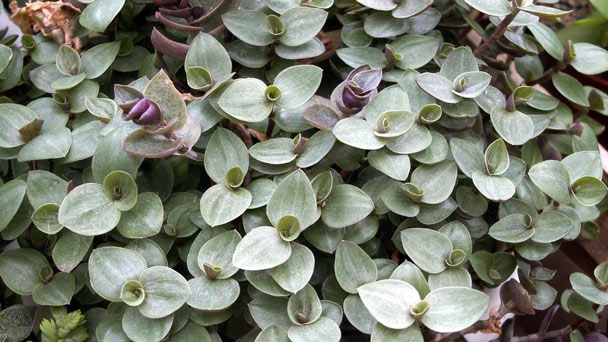
Callisia Repens (Turtle Vine Plant) is a perennial, ornamental, creeping herb with a purplish stem that takes root at nodes, often forming dense MATS. Callisia Repens flowers from late spring to early fall. Callisia Repens can be used in containers or flowerpots, floor coverings, and hanging baskets.
This type of succulent prefers a warm climate. It can survive at zone 10a-11b which is around -1.1°C (30°F). If you live in a cold area, it is better to plant callisia repens (Turtle vine) in an indoor environment. As long as it gets enough sunlight, the plant will grow happily.
When selecting what pot to use be sure that you understand the difference between the material used (See our guide on how to pick the best plant pot).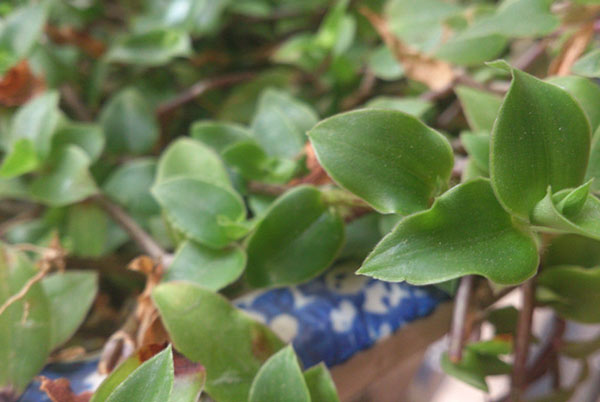
Use a mix of potting soil and perlite. Give the soil a good soaking through (ideally with something yummy like Groconut to encourage that initial root growth), and let all excess water drain out.
Within weeks Callisia repens (Turtle vine) cuttings have rooted and are shooting out new leaves. Transporting them sucks a bit when it's time to pot up though. Try to do it in one clump if you can. Wait longer than you think to pot up, as Callisia repens (Turtle vine) roots are annoyingly fine, so the more growth, and more tangled up they are together, the easier it is to repot.
Callisia repens (Turtle vine) root so easily you could just prop straight in to the size of pot you'd want them in when big, but that needs a tonne more cuttings to cover the soil.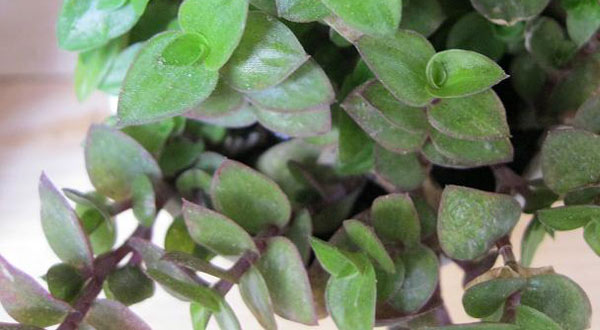
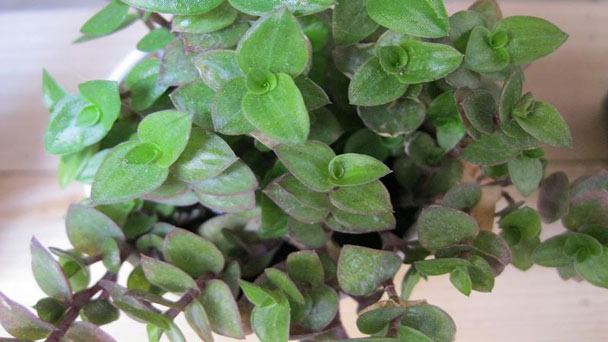
Both cats and dogs may experience a red, itchy rash when coming into contact with the plant. Additionally, this plant is known to contain calcium oxalate crystals, which may pose a problem when ingested by most pets.
While not considered invasive in the US, the Bolivian Jew plant has caused problems in Australia and a few other countries. It may also be considered a weed when allowed to grow wild.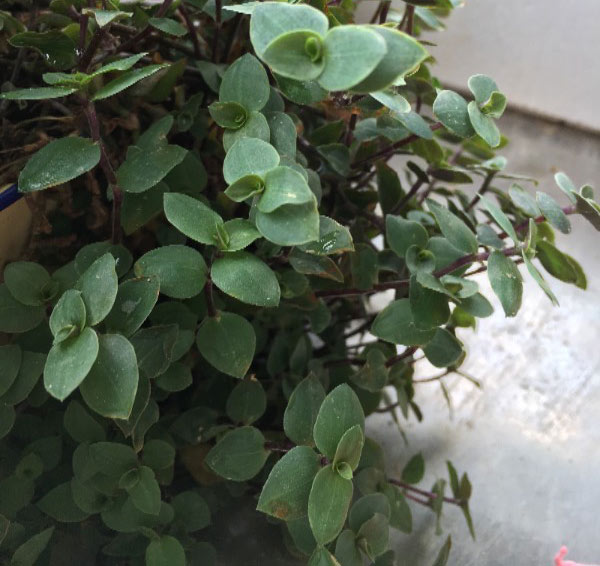
Where to Grow Callisia Repens (Turtle Vine Plant)How to Grow Callisia Repens (Turtle Vine Plant)Callisia Repens Propagation with SeedsCallisia Repens Propagation with Stem CuttingsCallisia Repens Propagation with OffsetsHow to Care for Callisia Repens (Turtle Vine Plant)Callisia Repens LightingCallisia Repens Soil CareCallisia Repens WateringCallisia Repens Temperature & Humidity CareCallisia Repens FertilizerCallisia Repens PruningCallisia Repens Pests & Diseases CareCallisia Repens (Turtle vine Plant) Care FAQIs Callisia Repens Toxic?Is Callisia Repens easy to grow?Is Callisia repens a succulent?
Where to Grow Callisia Repens (Turtle Vine Plant)
Callisia Repens succulents need strong light. When planting this succulent type in a garden, make sure it gets sunlight. Full to partial sun is the best for its growth. It is better to grow outdoor rather than indoor.This type of succulent prefers a warm climate. It can survive at zone 10a-11b which is around -1.1°C (30°F). If you live in a cold area, it is better to plant callisia repens (Turtle vine) in an indoor environment. As long as it gets enough sunlight, the plant will grow happily.
When selecting what pot to use be sure that you understand the difference between the material used (See our guide on how to pick the best plant pot).

How to Grow Callisia Repens (Turtle Vine Plant)
Callisia Repens Propagation with Seeds
To propagate callisia repens from seeds, take the seeds and plant in well-draining soil, but do not water immediately. Use two fingers to create a small opening in the center of the soil. The seedlings should be grown in hot, humid areas if you can help it. Also important to note, this plant grows very slowly, so you may have to wait quite a while for the seeds to become a full-grown plant.Callisia Repens Propagation with Stem Cuttings
Honestly, so easy to propagate Callisia repens (Turtle vine plant) seems like cheating. Chop off a stem worth keeping from Callisia repens (Turtle vine). Pick one with at least some green leaves on it. Strip off the bottom 2 or 3 leaves and then shove the bare stem in soil up to where the leaves start - done.Use a mix of potting soil and perlite. Give the soil a good soaking through (ideally with something yummy like Groconut to encourage that initial root growth), and let all excess water drain out.
Within weeks Callisia repens (Turtle vine) cuttings have rooted and are shooting out new leaves. Transporting them sucks a bit when it's time to pot up though. Try to do it in one clump if you can. Wait longer than you think to pot up, as Callisia repens (Turtle vine) roots are annoyingly fine, so the more growth, and more tangled up they are together, the easier it is to repot.
Callisia repens (Turtle vine) root so easily you could just prop straight in to the size of pot you'd want them in when big, but that needs a tonne more cuttings to cover the soil.
Callisia Repens Propagation with Offsets
It can take a long time for the mother plant to produce an offset. An offset is a complete daughter plant produced asexually from the main plant. They are genetic clones. To propagate using offsets, use sharp scissors to cut the offset from the main plant, and clean off all the soil from the roots. Give it a few days to callous where you cut it, then you can place it in well-draining soil. Do not water immediately as the roots need a chance to acclimate to the new soil.
How to Care for Callisia Repens (Turtle Vine Plant)
Callisia Repens Lighting
Callisia repens (Turtle vine plant) grows grows well in partial sun to partial shade. If the pot is placed at least 50 centimetres behind the window hot summer sun will be tolerated. During summer a spot in the garden or on the balcony is welcome. There Callisia repens has to be slowly accustomed to the sun, which is no longer filtered through a window.Callisia Repens Soil Care
Speaking of soil, the Callisia repens isn’t particular, so as long as you choose a potting soil that allows for proper drainage it should grow just fine. Add peat moss into a regular into potting soil to help enhance drainage. You could also add some additional perlite to your soil. A succulent soil mix should work well too.Callisia Repens Watering
Water Callisia Repens regularly but allow the topsoil to dry out before watering again. Water with lime-free water waiting for the soil to dry. Spray the plant every day with lime-free water in summer. The rest of the year spray 2 times a week. It is essential that you avoid overwatering the plant, and as it is succulent, it might cause root rot. The best rule to follow is to poke your finger in the topsoil and water only when you feel it dry to an inch deep.
Callisia Repens Temperature & Humidity Care
The Callisia Repens prefers a warm and humid environment. Ideally, with temperatures above 16 degrees.Callisia Repens Fertilizer
Use a balanced fertilizer once in 6-8 weeks during the growing period. Follow the instructions at the label for dosage. Also, water the plant before the application, or it might burn the roots and cause leaves’ yellowing.Callisia Repens Pruning
The Callisia repens will need to be trimmed regularly to help maintain the desired shape of your plant. It will hold a ‘bubble’ shape until the weight of its stems and leaves make it trail. Put your plant out in the summer rain, or rinsing it in the shower on occasion to remove any dust that my have accumulated.Callisia Repens Pests & Diseases Care
Callisia repens is resistant to most pests, although low humidity will attract red spider mites, who like to build their webs along the stem tips. Misting the foliage makes the plants less attractive to these pests.Both cats and dogs may experience a red, itchy rash when coming into contact with the plant. Additionally, this plant is known to contain calcium oxalate crystals, which may pose a problem when ingested by most pets.
While not considered invasive in the US, the Bolivian Jew plant has caused problems in Australia and a few other countries. It may also be considered a weed when allowed to grow wild.

Callisia Repens (Turtle vine Plant) Care FAQ
Is Callisia Repens Toxic?
Callisia repens (Turtle vine plant) might cause an allergic reaction in pets causing skin, eye or mouth irritation so keep it out of reach of your furry friends.Is Callisia Repens easy to grow?
Yes. Growing Callisia repens is easy in both indoor and outdoor, and that's what makes turtle vine a valued ornamental houseplant.Is Callisia repens a succulent?
Yes. Callisia repens, also known as creeping inchplant, Bolivian Jew or turtle vine, is a succulent creeping plant from the family Commelinaceae. This species comes from Central and South America.Latest Updated
- Benefits of Bugleweed - 7 Science-backed Health Benefits
- Bugleweed Dangers & Side Effects - Is It Poisonous?
- How to Plant Evergreen Trees - What You Should Know
- When to Plant Evergreens - Grow Guide for Evergreen Trees
- 12 Wonderful Evergreen Shrubs for Your Garden
- 12 Popular Evergreen Plants with Pictures for Beginners
- When And How To Prune A Lilac Bush Like a Pro
- How to Grow & Care for Lilac Vine (Hardenbergia Violacea)
- Japanese Lilac Tree (Syringa Reticulata) Care & Propagation Guide
- Shumard Oak Pros and Cons - What to Know
Popular Articles
- Winter maintenance of Antirrhinum Majus
- How to Grow Terminalia Mantaly Tree
- How to Grow and Care for Crossostephium Chinense
- How to grow Antirrhinum Majus in spring
- Peristeria Elata (Dove Orchid) Profile: Info & Care Guide
- Underwatered Snake Plant (Sansevieria Trifasciata) - Signs And How To Fix
- How to Care for Brazilian Jasmine Plant (Mandevilla Sanderi)
- How to Grow & Care for Graptopetalum Purple Delight in Summer
- Rosa Chinensis (China Rose): Plant Growing & Care Tips
- How to Care for Baby Sun Rose (Aptenia Cordifolia)